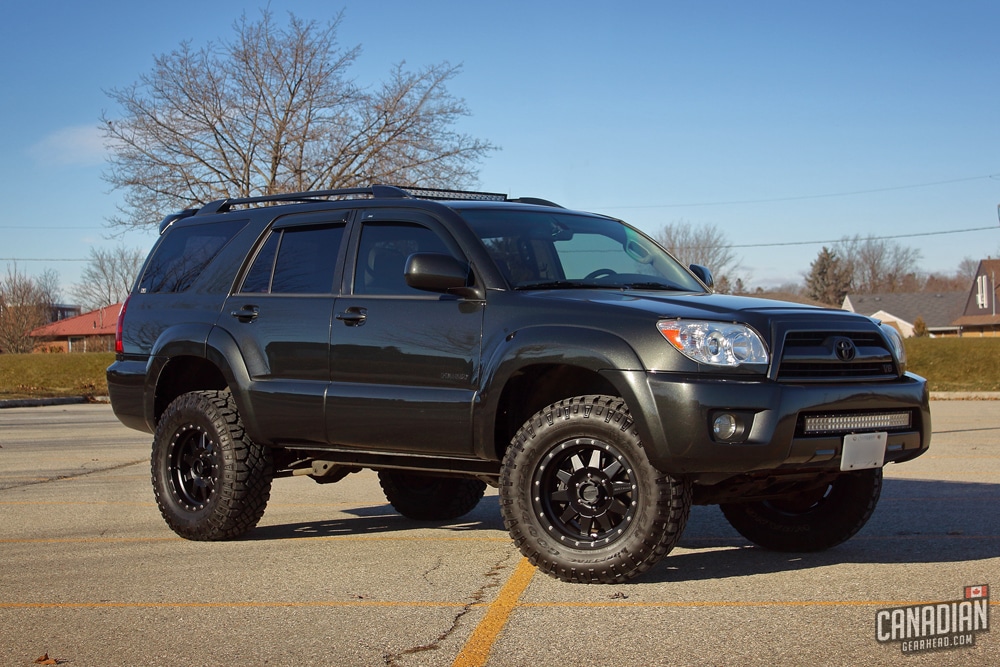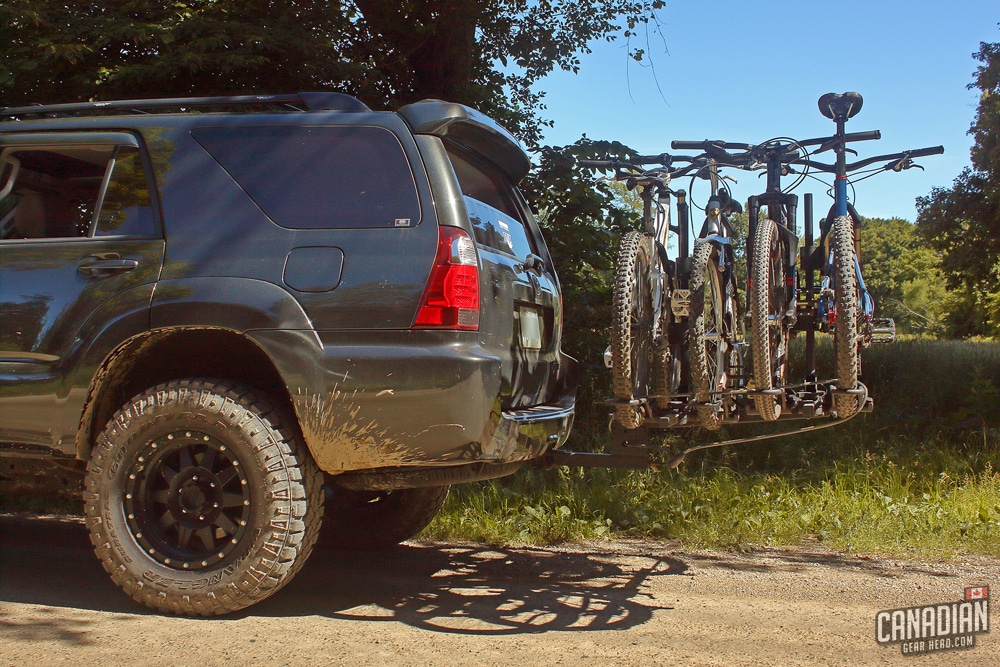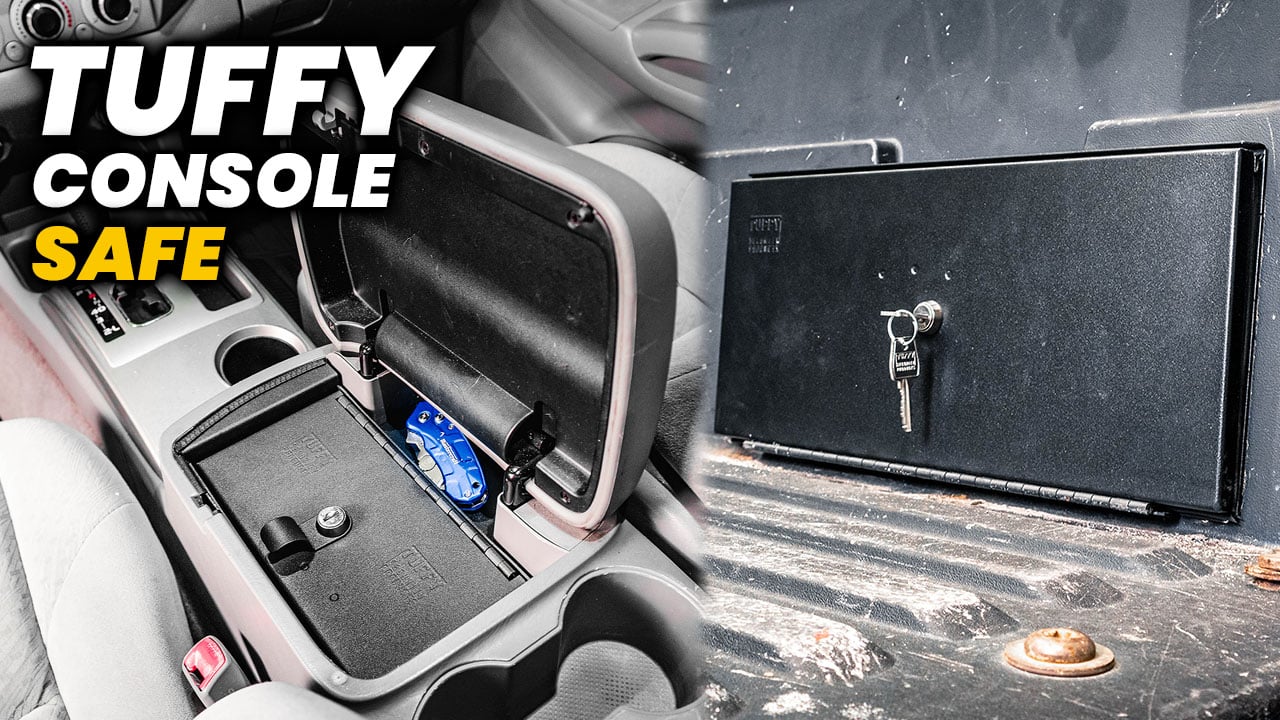Installing a lift kit is one of the first things that comes to mind when most people decide to upgrade their truck or SUV. Today, I’m going to lay out a few things to consider before lifting your Toyota 4runner to help you make the right choice.
Deciding whether or not to lift your 4runner is only the tip of the iceberg. There are a ton of options available thanks to the 4runner’s popularity in the aftermarket world. And with the overland/adventure industry growing rapidly, that’s not going to slow down any time soon.
Lifting your 4runner isn’t something you should treat as an impulse purchase. You’ll need to put some thought and research into it if you want to find the right setup for your rig, your needs, and your budget. If you’re starting out here, you’re already on the right track.
1. Budget
What you’re willing and able to spend on your lift kit is probably the most important thing to consider. It doesn’t matter if a Stage 5 kit from Icon is the perfect choice for you if you’re only looking to spend $500.
So be honest with yourself and make sure to manage your expectations. Suspension is something that you truly get what you pay for. Don’t expect to be jumping sand dunes with a $150 spacer lift. The more performance you’re looking for, the more you’ll have to spend.
How much does it cost to lift a 4runner?
There is a very wide range of pricing for different 4runner lift kits. On the low end, you can find simple spacer lifts for $150. On the high end, you can easily spend upwards of $3,000 on top of the line systems from the best companies.
2. Planned tire size
It’s always a good idea to decide on the tires you want to run before modifying your suspension. Your tire size will play a big role in how tall of a lift you need. While 4runners tend to have a somewhat forgiving fender shape compared to other vehicles, you’ll still need to put some consideration into this.
You’ll also need to decide whether you’re willing to do any trimming to your bumpers, fenders, mud flaps, or even your body mounts. These are all things that might need to be addressed in order to clear a 33″ or bigger tire on most generation 4runners.
3. Planned use
Off Road
How do you plan to use your 4runner? Will it see heavy off roading or is it a pavement princess? If you do take it off road, what kind of driving will you be doing – slow speed crawling or high speed jumping? There are many different stages of suspension setups to choose from depending on how crazy you want to get.
On Road
For street driven 4runners, things are a bit simpler. Find something that gives you the appearance you want and make sure it offers a smooth ride while being able to handle corners decently.
Towing
Whether or not you plan to tow anything will matter when you’re choosing a suspension setup. Ideally, you don’t want your vehicle to be any taller than it needs to be for towing. The lower the center of gravity is, the safer you’ll be.
Spring rates make a big difference if you’re towing. Softer springs might ride nicer but they’ll cause the vehicle to squat when you hook a trailer up to it.
An interesting example of rear lift springs is the 895 from Old Man Emu (ARB’s suspension department). They purposely design these rear springs to be able to handle a heavier load from things like a rooftop tent, armor, or a spare tire carrier. Because of their added stiffness, they end up providing a 2″ lift.
I like their thought process on this. These are the springs that I’ve had on the rear of my 4runner for years and I couldn’t be happier with them. They did indeed provide 2″ of lift but the real draw to them is the perfect stiffness. They ride slightly firmer than stock but nothing too noticeable, even while unloaded.
Where they really shine is the moment you start using your 4runner like an SUV. There is very little squatting when hooking up a normal size trailer. I’ve hauled a 400+ lb load in the trunk without it changing anything in terms of how it drives. At 220 lbs, I can jump up and down on the trailer hitch and the suspension barely moves an inch.
All of this would be a totally different story if I was running the original springs or soft aftermarket ones. So make sure you consider this if you plan to handle any extra weight.
Armor/accessories
Speaking of adding extra weight, this is something that many people deal with as an afterthought. Winch bumpers, spare tire carriers, sliders, armor, rooftop tents, etc can all add up to some serious extra weight on a vehicle. You’ll want to plan for this ahead of time when deciding on your lift setup.
Your 4runner might sit perfectly level with the OEM bumpers on it but as soon as you install a metal bumper and winch up front, that’s likely going to change. Don’t make this mistake. You’ll need a heavier spring rate if you’re going to add this much weight. Luckily, many aftermarket companies will offer this advice upfront when choosing between their packages.
4. Lift vs level
Most SUVs and trucks come from the factory with a bit of forward rake (the front end sits lower than the rear). The 4runner is no exception. They do this on purpose to compensate for any added payload or trailer weight. Once you weigh it down, it’ll sit level.
There are a lot of people out there that don’t like this look though. If you aren’t planning on towing or hauling anything heavy, you might prefer to have the vehicle riding level when it’s unloaded.
This is why leveling kits have become so popular, especially with pickup trucks. In most cases, it’ll consist of a pair of spacers that sit on top of the front springs to raise the front end a couple inches, thus leveling it out.
As mentioned earlier, keeping a little bit of rake might be a good thing if you plan on towing or hauling heavier payload.
Want some more ideas for modifying your 4runner? Check out this article:
5. Type of lift
There are a few different types of lifts available for the 4runner: spacers, upgraded shocks, coilovers, body lifts, long travel kits, drop bracket lifts or a combination of each. You’ll want to make sure your lift of choice will work with any fancy OEM suspension you might have such as X-REAS or KDSS.
Spacer lifts
A spacer lift will provide extra tire clearance without replacing the factory suspension. These are essentially leveling kits that include spacers to lift the rear as well. Aside from possibly being a bit stiffer upfront (by preloading the OEM springs), it won’t change the vehicle’s performance.
If you want to improve the appearance or run slightly larger tires without breaking the bank, these spacer kits can be a good option.
Upgraded shocks
Upgrading to shocks like the Bilstein 5100 will allow you to lift the front end of your 4runner. They give you a choice of how high the spring perch sits which allows you to adjust the ride height. The spring needs to be compressed in order to make the adjustment so it’s typically only something that’s done at the time of installation.
You can use either your OEM springs or aftermarket ones with the Bilstein 5100. Some people will even switch to OEM FJ Cruiser springs in order to get the ride height exactly where they want it.
Coilovers
This is the point where things progress more towards higher end suspension setups. Coilovers are sold as complete units with new springs and shocks. These can range from lower end options like my Fox 2.0s all the way up to fancy remote reservoir shocks from companies like King.
The biggest draw to coilovers is their level of adjustability. They have a threaded body that allows you to adjust spring preload and ride height. Aside from the lower end ones, most coilovers will also have dials for adjusting compression and rebound so that you can fine tune your suspension for the exact type of driving you do.
Long travel suspension
Long travel suspension setups are designed for high speed off roading. This is where things really get serious. These systems will change the geometry of your suspension in order to extend how far your wheels can travel up and down.
Long travel kits will include things like upper and lower control arms, aftermarket bump stops and extra bracing. They also tend to use high end coilovers as well. Specific wheel sizes and wider fenders are often required for clearance.
Body lifts
Body lifts are often frowned upon in the off road community. They are essentially spacers that separate the body from the frame of the vehicle. This will improve tire clearance but that’s about it.
There may be clearance issues with things like bumpers, steering, and headers. Because of this, most 4runner owners that do choose to use a body lift will stick with something around 1″-1.25″.
Drop bracket lifts
I don’t believe there are many options for drop bracket lifts specifically for the 4runner, but some people have installed kits that were meant for the FJ Cruiser. Drop bracket lifts basically space the front suspension further away, providing a large amount of lift. This style of lift is more popular on pickup trucks with 4″+ of lift.
Aside from what you gain from running a larger tire size, a drop bracket lift won’t actually improve your ground clearance – it’ll just make your vehicle taller. For that reason, this type of lift is considered to be more of an aesthetic upgrade than a performance one.
Lift kit combinations
Many 4runner owners will use a combination of lift kit types to get their setup just right. Spacers or body lifts will sometimes be added to upgraded shocks to gain a bit of extra height. This is most common with people who are pushing the limits in terms of tire size (35″+).
6. Garage height
One of the last things you’ll want to consider before lifting your 4runner is the height clearance of places you drive regularly. A lift kit and bigger set of tires can easily be a deal breaker when it comes to whether or not your vehicle will fit inside your garage. Make sure to take some measurements beforehand so you don’t end up in an embarrassing situation.
7. Potential downsides to lifting your 4runner
As with most vehicle modifications, there are some downsides you need to be aware of. Lifting your suspension can put more strain on front end parts, especially things like CV joints. In most cases, this isn’t too big of a deal as long as you stay around 3″ of lift or less. It will still accelerate the wear on things that are already considered wear-items though.
Depending on how tall of a lift you go with, you might notice it feels a bit top heavy in corners. Raising your vehicle’s center of gravity won’t do any favors for you when it comes to handling. The good news is that most high end suspension systems will do pretty well in terms of keeping body roll at a minimum but it’s still something to keep in mind.
One last thing to remember is that you’ll need to plan for a fresh wheel alignment after lifting your vehicle with any of these options (except a body lift). This will make sure you get the most out of your new suspension setup and make sure your tires last as long as possible.

Tim is the creator of Canadian Gearhead. His experience with auto detailing and working for Toyota shows through all of the articles posted here. He runs the Canadian Gearhead site and YouTube channel full-time now and currently owns a 2007 4runner, 2006 Tacoma, and 1991 MR2. Read more about Tim:









Leave a Reply